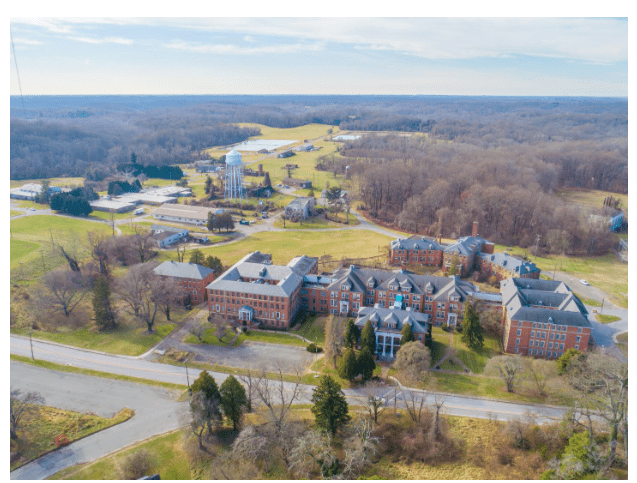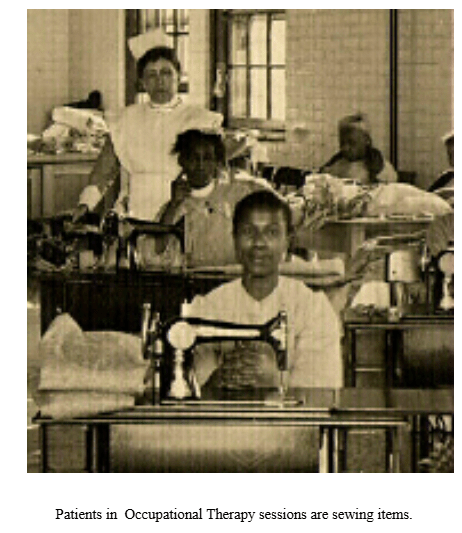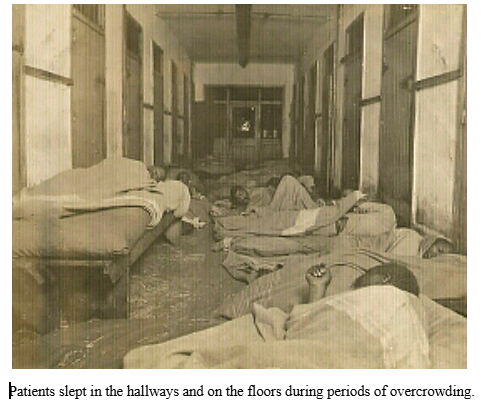On June 30th, 2004— twenty-one years ago this week, the Crownsville Hospital Center closed its doors– ending a nearly one hundred year legacy for Maryland’s mentally ill and disenfranchised African Americans, and leaving the sprawling campus abandoned with an uncertain future.

Founded in 1910 as the State “Hospital for the Negro Insane,” this segregated mental health facility admitted patients of all ages with “mental Illness” which at the time often include chronic conditions, homelessness and epilepsy.
The approach to psychiatry in the early years was brutish by modern standards. Patients were made to build the campus, forced to cultivate the fields that fed both patients and staff, and worked the Willow Farm weaving baskets on what is today the Bacon Ridge Natural Area.


By the 1940s, the campus was overcrowded and understaffed, making for horrific living conditions. But soon, local Black community responded– and through churches and patient families, brought increased public accountability and initiated a radical transformation in the facility’s resources and personnel.
During the Civil Rights Era, the push for racial equality transformed Crownsville Hospital. Dr. Jacob Morgenstern became Superintendent in 1947 and hired the facility’s first Black medical staff members. The Crownsville Auxiliary was founded in 1954 in collaboration with the NAACP where female volunteers advocating for patients Court rulings led to the integration of the facility in 1962, Dr. George Phillips became the first Black Crownsville superintendent in 1965, establishing Crownsville’s first community care units in 1969. Evolutions in mental health treatment, a deteriorating infrastructure, and budget cuts made the closure of the hospital in 2004 seemingly inevitable. But the story does not end there…..
In 2022, Anne Arundel County acquired the property establishing the Crownsville Hospital Memorial Park. Guided by community members with close ties to the site, the hospital’s often difficult history is slowly but surely being reclaimed, remembered and memorialized. Oral history interviews will help document the history of the site, and the Crownsville Master Plan calls for Museum installations, education, programming, art, and signage to honor their humanity, dignity, and place in our memory.
In 2005 the Friends of the Crownsville Hospital Patient Cemetery held the first “Say My Name” Ceremony. This now annual event honors more than 1,720 patients buried at Crownsville State Hospital and soon, a memorial inscribed with the names of individuals once identified only by numbers will be unveiled.
Note that the campus is currently not accessible to the general public, but you can explore this fascinating story virtually– by checking out the Civil Rights Guide for Annapolis and Anne Arundel County (www.visitannapolis.org/black-history-365/civil-rights-guide/), and by visiting four recently installed story boards in a newly built pocket park at the corner of Crownsville Road and North Drive– across from the Administration Building.
The Chesapeake Crossroads Heritage Area is a Maryland Certified Heritage Area that celebrates the history, culture, and natural beauty of Annapolis and across Anne Arundel County. A 20-plus year collaboration between Anne Arundel County, the City of Annapolis, and the Maryland Heritage Area Authority, we connect visitors and residents to over 60 incredible destinations, from world-class museums and historic homes to scenic parks, trails, nature preserves, and vibrant arts centers.
Looking for a fun way to get the family out and exploring this summer? We invite you to take part in our 2025 Historic Summer Bucket List Challenge, a fresh take on summer fun that combines learning, adventure, and memory-making. Visit our website ChesapeakeCrossroads.org, to explore a full list of attractions. Get started checking items from the Historic Summer Bucket List!
If you are curious about other heritage sites in and about the Crownsville area, here are five places you can visit to learn more about your local history.
- Visit Bacon Ridge Natural Area: The 900+ acre Bacon Ridge Natural Area is a true natural gem, featuring expansive marshes, mature forests, and, at its center, its namesake creek, Bacon Ridge Branch. Positioned in Crownsville and in the headwaters of the South River, Bacon Ridge Natural Area is owned by Anne Arundel County and managed by the County’s Department of Recreation and Parks. Portions of the Bacon Ridge Natural Area were once part of the Crownsville Hospital property. The Crownsville Hospital opened in 1911 to serve African American patients needing psychiatric care. Today, a hospital cemetery remains on the grounds of the natural area, with over 1,700 patients’ graves, marked only by numbers.
- Visit Civil Rights Era Sites in Anne Arundel County: Drawing on over 50 oral histories, this virtual tour offers a unique opportunity to explore local history through the eyes, voices, and memories of those who lived it firsthand. Showcasing local places, residents, and their narratives, the project provides insights into everyday activities during a period of segregation. It highlights spaces of leisure and recreation where people of color could come together and experience solidarity and empowerment, including locations such as stores, ballfields, beaches, juke joints, movie theaters, beauty salons, and barber shops.
- Visit Baldwin Hall: Historic Baldwin Hall, a one-story Italianate Carpenter Gothic structure, is listed on the National Register of Historic Places and has served its community since 1861. Located on Old Generals Highway, traveled by General George Washington in 1783 to resign his commission in the Continental Army, it shares the route with the Rising Sun Inn. The building and grounds have been restored as a community center and is available for rent.
- Visit Rising Sun Tavern: The Rising Sun Inn has functioned as a farmhouse, inn, tavern, and stagecoach stop since 1753. Located at 1090 Generals Hwy, Crownsville, on the Washington Rochambeau Revolutionary Route, it is listed on the National Register of Historic Places. The inn is a testament to 18th and 19th-century rural life in Anne Arundel County and Maryland, remaining an active part of the community for nearly 270 years.
The Chesapeake Crossroads Heritage Area is a Maryland Certified Heritage Area that celebrates the history, culture, and natural beauty of Annapolis and across Anne Arundel County. A 20-plus year collaboration between Anne Arundel County, the City of Annapolis, and the Maryland Heritage Area Authority, we connect visitors and residents to over 60 incredible destinations, from world-class museums and historic homes to scenic parks, trails, nature preserves, and vibrant arts centers.
